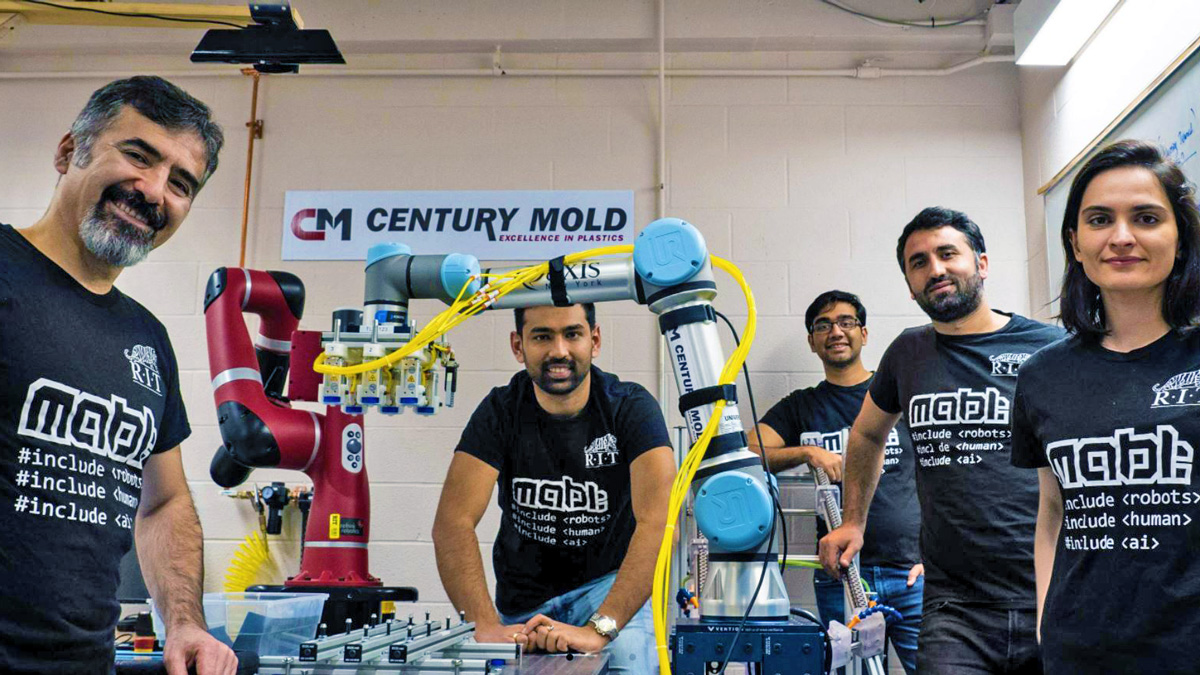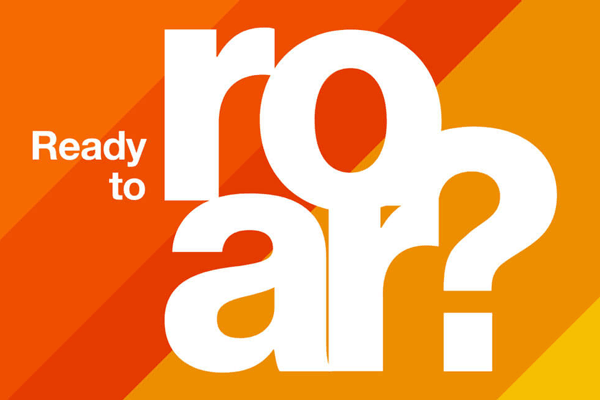Robotics Option - Electrical Engineering BS

Robotics Option
Electrical Engineering BS
- RIT /
- College of Engineering /
- Academics /
- Robotics Option - Electrical Engineering BS
RIT’s robotics option in electrical engineering BS provides you with the theoretical and practical skills required to design robots and robotic devices.
Overview for Robotics Option - Electrical Engineering BS
Why Study the Robotics Option in Electrical Engineering BS at RIT?
Advanced Courses: Choose from dynamic elective courses designed to provide a depth of understanding in robotics and robotic systems.
Multidisciplinary Senior Project: Work on an exciting team-based project that focuses on designing, developing, or advancing an aspect of robotics.
STEM-OPT Visa Eligible: The STEM Optional Practical Training (OPT) program allows full-time, on-campus international students on an F-1 student visa to stay and work in the U.S. for up to three years after graduation.
Self-driving cars, military surveillance robots, surgical robots, robotic welding, smart manufacturing, and collaborative robots. These are all examples of robotics used in everyday life, where robots were developed to assist humans, work with humans, carry out jobs too dangerous for people, or perform tasks with an exact precision unattainable by humans.
The robotics option is part of the electrical engineering BS degree.
Advanced Courses in Robotics
By studying robotics in electrical engineering, you'll learn the theoretical and practical skills required to design robots and robotic devices, and how to implement ethical AI solutions. Specifically, you’ll take courses that cover topics such as:
- Advanced programming
- Design of robotic systems
- Kinematics and dynamics of robotics manipulators
- Mobile robots
- Intelligent robots
- Autonomous robots
- Localization and mapping
- Artificial intelligence
Multidisciplinary Senior Design
Multidisciplinary Senior Design is a two-course sequence in your final year of study. It’s a capstone learning experience that integrates engineering theory, principles, and processes within a collaborative team environment. Multidisciplinary student teams follow an engineering design process, which includes assessing customer needs, developing engineering specifications, generating and evaluating concepts, choosing an approach, completing systems and subsystems designs, and implementing the design to the extent feasible, for example by building and testing a prototype or implementing a chosen set of improvements to a process. For this design project, you will apply the knowledge you have learned in the classroom and from your co-op experiences. Students in the robotics option are expected to work on a design project that focuses on designing, developing, or advancing an aspect of robotics.
-
#57 Best Engineering Undergraduate Programs, 2026
RIT’s engineering majors are ranked among the Best Undergraduate Engineering Programs in the nation.
-
Apply by January 15 for Fall 2026
Get your first-year application in and receive a decision by mid-March.
-
Join Us for Accepted Student Open House
Visit campus on March 28 or April 11 to meet faculty, tour campus, and ask your questions.
Careers and Cooperative Education
Cooperative Education
What’s different about an RIT education? It’s the career experience you gain by completing cooperative education and internships with top companies in every single industry. You’ll earn more than a degree. You’ll gain real-world career experience that sets you apart.
Co-ops and internships take your knowledge and turn it into know-how. Your engineering co-ops will provide hands-on experience that enables you to apply your engineering knowledge in professional settings while you make valuable connections between classwork and real-world applications.
All engineering majors are required to complete four blocks (48 weeks) of cooperative education experience. For students in the robotics option, you are encouraged to complete co-ops in companies and organizations that develop, design, or implement robotic systems. A sampling of companies that hire RIT students for co-ops and for full-time employment include Tesla, Boston Dynamics, Amazon Robotics, SpaceX, Lockheed Martin, Boeing, Intel, iRobot, Johnson and Johnson, BAE Systems, General Motors, Vicor Corp, Argo AI, and more.
Admissions and Financial Aid
This program is STEM designated when studying on campus and full time.
This option is part of the electrical engineering BS. Please visit the degree program page for admission requirements.
Financial Aid and Scholarships
100% of all incoming first-year and transfer students receive aid.
RIT’s personalized and comprehensive financial aid program includes scholarships, grants, loans, and campus employment programs. When all these are put to work, your actual cost may be much lower than the published estimated cost of attendance.
Learn more about financial aid and scholarships
Contact
- Ferat Sahin
- Department Head
- Dean’s Office
- Kate Gleason College of Engineering
- 5854752175
- feseee@rit.edu
Department of Electrical and Microelectronic Engineering






